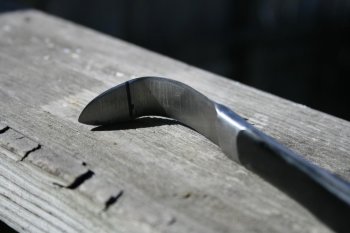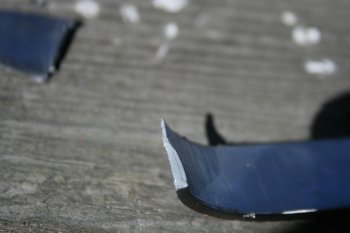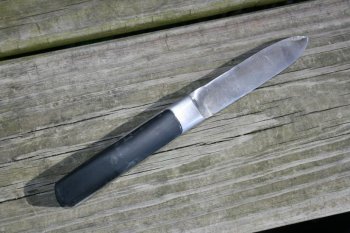Doug Lester
Well-Known Member



Above is a destructive test of the knife pictured on the right. It was a spear point, single edged blade with an integral bolster forged from 3/4" 52100 rod and austempered at 430 degrees for four hours. I kind of screwed up the design so it got volunteered for testing.
It passed the wire cutting test without indenting or chipping. I cut 3/8" hemp rope about 25-30 times before it started to drag. I didn't do any chopping with it due to it's small size. A larger knife that I did the same way from the same rod did much better at the slicing test and stood up to some chopping without loosing its edge.
Anyway, this knife bent 90 degrees easily with the aid of a 12" piece of black pipe. As you see from the picture of the bent blade it kept the bend but there was no crack in the edge of the blade or anywhere else. I then bent to blade back and forth through an ~180 degree arc five times before it broke. I would give it high marks for toughness but low on strength. I guess it boils down as to whether a bent blade or a broken blade is worse
I'm not sure if I want to stick with this technique or not. I may just use it for big choppers to give it added toughness over pearlite. What I could try, after over riding the controls on the roaster is to quench to 350 degrees in a tank to increase the percentage of martensite and then up quench to 500-510 degrees in the roaster for an hour to convert the rest of the austinite to bainite. The middle picture doesn't show it well but it had a very fine grain.
Last edited:
